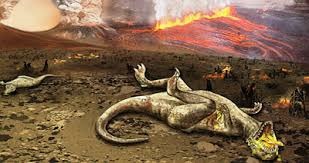A worldwide mass extinction 201.5 million years ago wiped out 60 percent of sea life, including coral reefs and shelled marine animals. On land, the dead included many plants as well as giant reptiles that competed with the earliest dinosaurs.
The mass extinction apparently was caused by huge carbon dioxide emissions from gargantuan volcanic eruptions, which eventually broke into today’s modern continents.
In the April 6 a new study used fossils and mercury isotopes from volcanic gas deposited in ancient proto-Pacific Ocean sediment deposits to determine when life recovered following the mass extinction at the end of the Triassic Period.
Kathleen Ritterbush, an assistant professor of geology and geophysics, co-authored the study. It found a significant recovery of sea life didn’t occur until after the end of the massive volcanic eruptions, which occurred in spurts between 201.6 million and 200.9 million years ago.
While colleagues did the mercury analysis, Ritterbush collected rocks and analyzed ancient sea sponges. Traces of mercury in rock showed the timing of major lava eruptions.
Although squid-like ammonites diversified rapidly when eruptions ceased, seafloor ecology recovered slowly. Sponges carpeted coastal habitats for about 2 million years before mollusks and corals finally re-established ecosystems as complex as before the eruptions.
Source :Science daily
N.H.Kh


 Home
Home